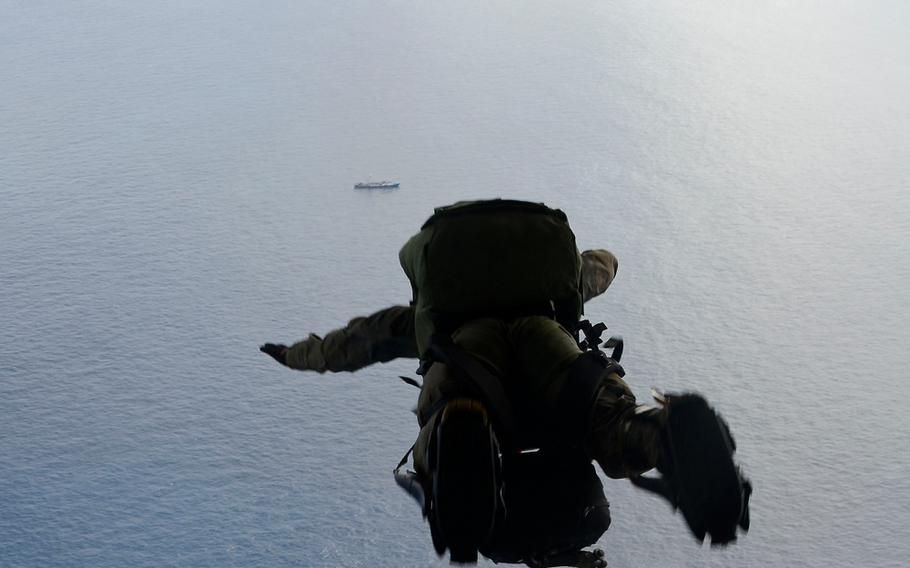
A U.S. Air Force pararescue airman from the 48th Rescue Squadron parachutes into the Pacific Ocean to aid to two critically injured sailors aboard a Venezuelan fishing boat May 3, 2014. (Adam Grant/U.S. Air Force)
Two seriously injured Chinese fishermen were successfully lifted by U.S. Air Force Pave Hawk helicopters from a skiff in the Pacific Ocean this afternoon, two days after pararescue men jumped to their location to provide emergency medical care.
The injured fishermen, along with nine others, abandoned their sinking ship after a fire and were initially found by a Venezuelan fishing boat about 1,100 nautical miles off the coast of Mexico.
Two of the 11 sailors died from their wounds while the others were uninjured and later transferred to a nearby Chinese vessel.
The Venezuelan ship called the Air Force Rescue Coordination Center on Friday asking for medical assistance, starting the complicated pararescue effort from a team based at Davis-Monthan Air Force Base in Arizona.
When the Pave Hawks reached the Venezuelan ship Monday afternoon, the vessel was about 600 nautical miles from the coast of Mexico.
It took two days to get the vessel closer to shore to help facilitate the helicopter rescue, said Maj. Sarah Schwennesen, spokeswoman for Davis-Monthan Air Force Base.
The six pararescue airmen used small speed boats and a skiff from the larger Venezuelan ship to create a safer, more level base for hoisting.
As seen in images provided by the Air Force, the injured Chinese sailors were attached to pararescue personnel when being lifted to the helicopters.
The Pave Hawks then flew to Cabo San Lucas, Mexico, where the injured were transferred to a HC-130 for a flight to a burn unit in San Diego, California.
The two arrived Monday night.
“All in all, the injured patients have been delivered to a higher level of care and that was our mission,” said Schwennesen.
Despite moving the fishing boat closer to shore, the helicopter pilots still flew for nine hours, requiring refueling four times. The two HC-130J aircraft that dropped off the pararescue airmen and their zodiac boats took 11 hours and also required refueling.
Six Chinese sailors are believed to be missing from the incident, according to the Air Force.
suzuki.toshio@stripes.com Twitter: @ToshJohn